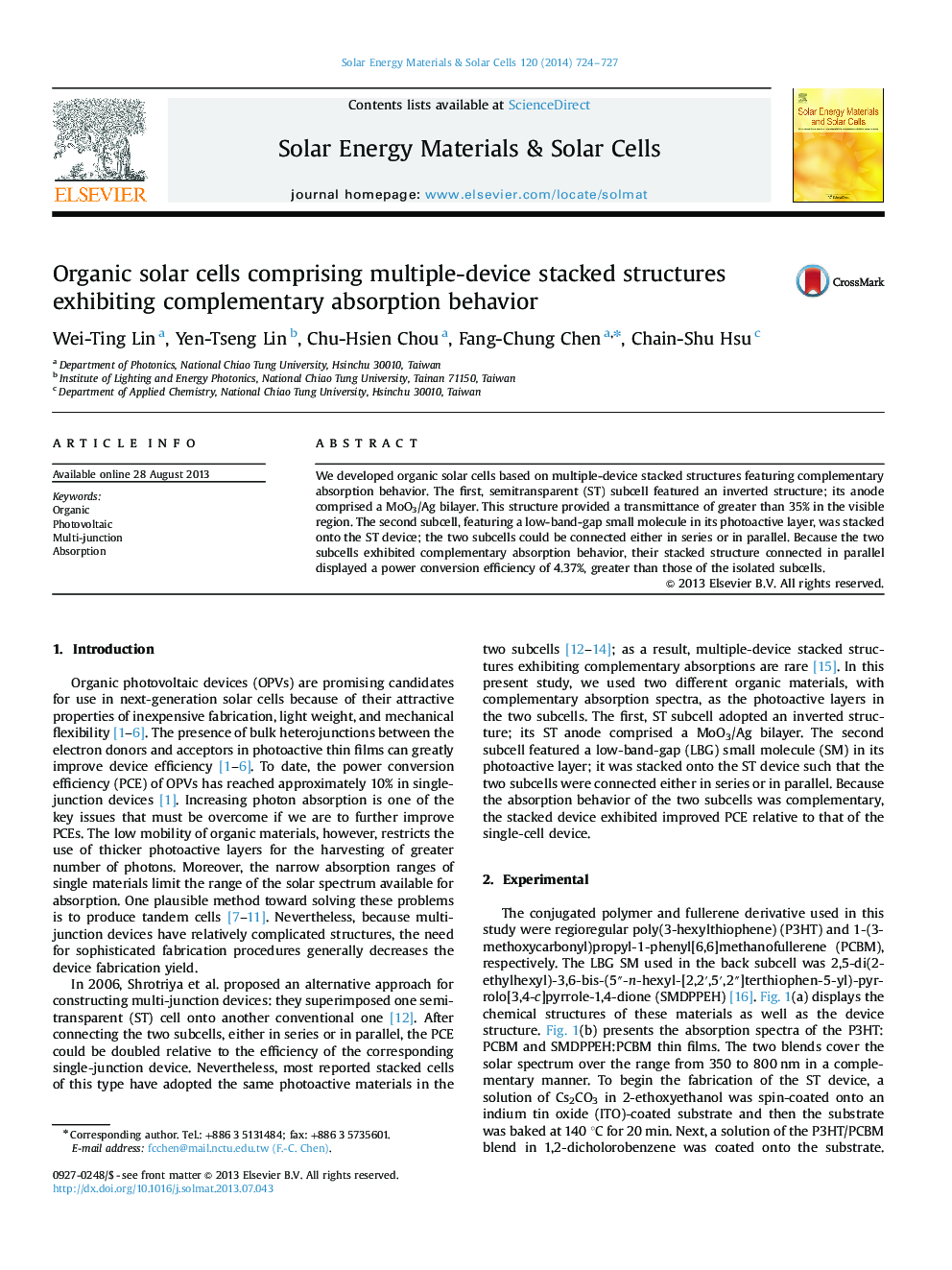| Article ID | Journal | Published Year | Pages | File Type |
|---|---|---|---|---|
| 78190 | Solar Energy Materials and Solar Cells | 2014 | 4 Pages |
•We develop multiple junction organic photovoltaic devices for achieving high efficiencies.•The first semitransparent device has optimized transmittance and allows sufficient photons pass through to the second back subcells.•The photoactive layer of each subcell exhibits complementary absorption.•Such multiple-device stacked structures provided an improved power conversion efficiency.
We developed organic solar cells based on multiple-device stacked structures featuring complementary absorption behavior. The first, semitransparent (ST) subcell featured an inverted structure; its anode comprised a MoO3/Ag bilayer. This structure provided a transmittance of greater than 35% in the visible region. The second subcell, featuring a low-band-gap small molecule in its photoactive layer, was stacked onto the ST device; the two subcells could be connected either in series or in parallel. Because the two subcells exhibited complementary absorption behavior, their stacked structure connected in parallel displayed a power conversion efficiency of 4.37%, greater than those of the isolated subcells.
Graphical abstractChemical structures of the two donor materials in each subcell and EQE spectra of the two subcells in the stacked structure.Figure optionsDownload full-size imageDownload as PowerPoint slide
